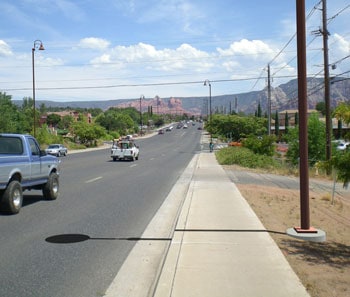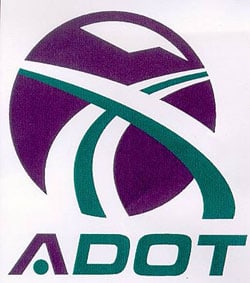It may be a big, smelly mess, but regional and state authorities are hoping it’s a problem cities in the Verde Valley can deal with together.
On Feb. 26, authorities from Arizona Department of Environmental Quality and Northern Arizona Council of Governments asked Verde Valley mayors if their cities would be interested in a regional solution for wastewater.
According to ADEQ’s Linda Taunt, under Section 208 of the Clean Water Act, the federal government encourages communities to work together to get more for their money.
ADEQ is expecting extra money from the recently signed stimulus bill to go to Section 208 and if the Verde Valley cities are interested in working together, there may be money and staff available, Taunt said.
Funding for Section 208 would look for key words like “recharge, reuse, regionalization, collaboration and environmental benefit,” she said.
The state is expected to receive roughly $270,000 for Section 208, ADEQ Communications Director Mark Shaffer said Wednesday, March 4, and about $105,000 must pass through regional planning agencies, like NACOG.
“There are currently eight such governmental entities handling CWA 208 money,” Shaffer said, “so how it will be divided has yet to be determined in the Verde Valley or any place else in the state.”
Shaffer estimates regions will have up to two years to spend the money.
What a regional wastewater treatment plant might look like is entirely up to local elected officials and residents, he said.
Mayors from Camp Verde, Clarkdale, Cottonwood, Jerome and Sedona agreed to take the issue back to their city councils for a consensus to investigate.
Clarkdale is currently working with Rep. Ann Kirkpatrick [D-District 1] for a wastewater plan that is “shovel ready,” Clarkdale Mayor Doug Von Gausig said.
Since Clarkdale and Cottonwood are working on new plants, Taunt directed the cities to continue ahead with their plans and then work regionally when the time comes.
“Clarkdale is desperately in need of a good system. Jerome will need to update theirs,” Taunt said. “Together we might be able to come up with a long-term solution.”
Sedona is currently searching for a solution to dispose of its effluent.
Although its wastewater treatment plant has the capacity to take in and treat 2 million gallons a day if the entire city were connected, it can only dispose of 1.6 million gallons a day.
Currently, Sedona’s wastewater plant takes in 1.2 million gallons daily. A solution to dispose of a future increase in effluent is estimated to cost roughly $3.5 million.
With Oak Creek and the Verde River in the area, it is important that the five cities have the most up-to-date infrastructure, Capalby said.
Now, with the troubled economy creating a reprieve in development, it is a great time to catch up on wastewater infrastructure and to best protect the vital water sources, he said.
According to Taunt, some of the stimulus money would go directly to NACOG, who would be able to staff some of the long-term projects.
“We want to make sure this area is able to capitalize on this opportunity, and it’s desperately needed,” Capalby said. “We’re not always concerned with quantity. We’re concerned with quality. With the remaining water we have in this area, it’s critical we protect it.”
NACOG is curious if the communities are interested in working together on wastewater issues, Executive Director Ken Sweet said.
“As the [Section] 208 administrators, we’re willing to look at it at a local level if the communities are, but if you don’t want to, we won’t mandate or dictate that, but we do think money is available,” Sweet said.
Clearly, there is a lot of cooperation in the Verde Valley for regional wastewater solutions, Sedona Mayor Rob Adams said.
Overall, it was a worthwhile meeting, according to Capalby.
“I think everyone understands the issue to have the most up-to-date infrastructure to meet the needs of the area,” he said.






















